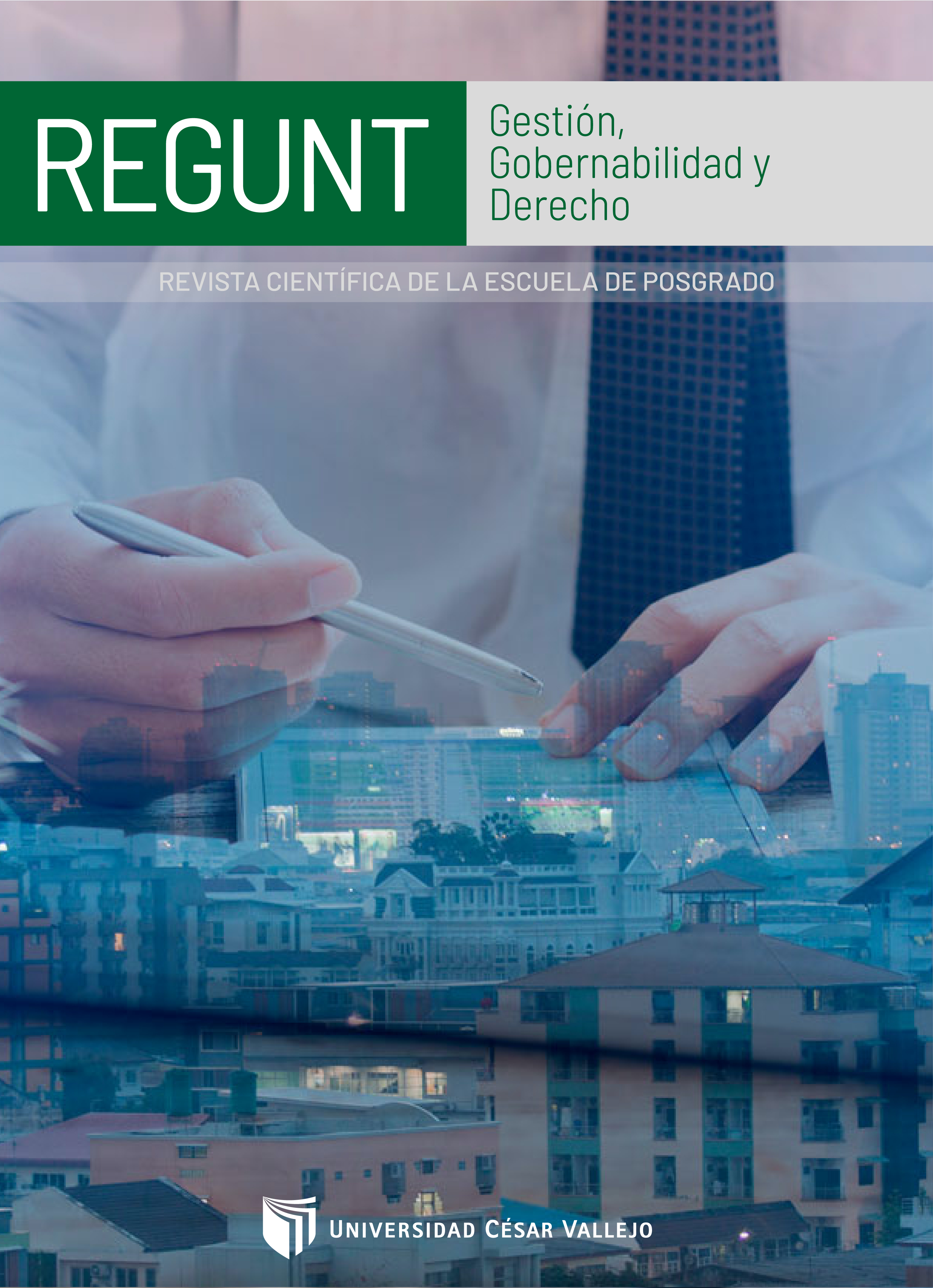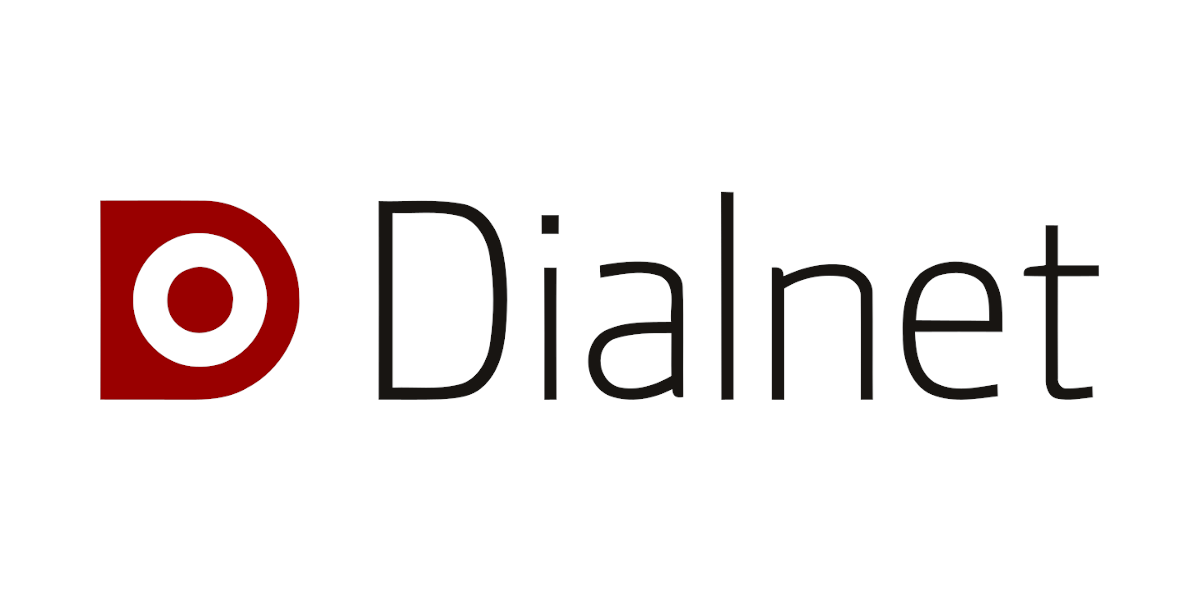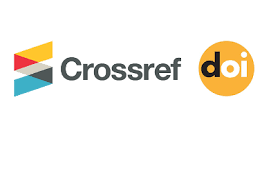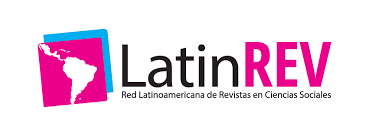Legal tools to regulate the social dynamics of protection of the right to life and the use of vaccines in the midst of the health crisis following the second wave of the pandemic in Peru
DOI:
https://doi.org/10.18050/regunt.v4i1.02Keywords:
legal tools, fundamental rights, law enforcementAbstract
Since the end of 2019, the world has faced a complex health situation caused by EVD-19, which has had a worrying impact on all sectors of society, causing quarantines all over the world, for which States took as a fundamental and complementary measure, the closure of educational institutions, the prioritisation of medical services, personal protection, and the reorganisation of transport, among others. These targeted quarantines, without any certainty as to the effectiveness of these measures, continued to be in place, with infection rates rising sharply from the second wave of the pandemic onwards. In this situation, the vast majority of Latin American states and organisations around the world have resorted to all available legal tools in order to regulate the social dynamics of protecting the right to life without technical legal criteria due to the inexperience that affected even the inoculation of vaccines in the midst of the health crisis. Objective: To evaluate the legal and social context of the health crisis in Peru, based on the legal tools available to make an approximation to the regulations available preferably during the second wave of the pandemic. Methodology: The research is located within the qualitative paradigm, of phenomenological design, of narrative review based on the analysis of laws related to the regulatory case of the use of anti-COVID-19 vaccines intimes of the second wave that impacted the maximum health crisis in Peru, with synchronic analysis in Latin American countries. The type of research is basic from the naturalistic and critical paradigm in its context. The results show that several legal mechanisms were generated to contain the second wave of COVID-19. It is concluded that access to health is an essential right in Peru, especially relevant during the COVID-19 pandemic; it is debated whether the private sector should handle vaccination, which could accelerate national immunization, although a regulatory framework is required to ensure equity and efficiency in this process.
References
Amparo action, 1 (2021) (testimony of Judicial Power of Peru). https://www2.congreso.gob.pe/sicr/cendocbib/con5_uibd.nsf/2E5ABA01F98D1EF5052586A8005C26BB/$FILE/Expediente-00680-2021-0-3204-JR-CI-02-LP.pdf
Covax. (2021). Working for global equitable access to COVID-19 vaccines. OMS. https://www.who.int/initiatives/act-accelerator/covax
Congreso de la Republica. (1993). Constitucion Política del Perú 1993. In Edición del Congreso de la República. https://www.leyes.congreso.gob.pe/constituciones.aspx
Decreto Supremo N° 008-2020-SA, (2020). https://busquedas.elperuano.pe/normaslegales/decreto-supremo-que-declara-en-emergencia-sanitaria-a-nivel-decreto-supremo-n-008-2020-sa-1863981-2/
Decreto de urgencia No 059-2020, (2020) (testimonio del Gobierno del Perú). https://busquedas.elperuano.pe/normaslegales/decreto-de-urgencia-que-dicta-medidas-extraordinarias-para-g-decreto-de-urgencia-n-059-2020-1866608-1/
Domínguez, A. (2017). Derecho Sanitario y responsabilidad médica (Universidad de Valladolid (ed.)).
Decreto Supremo N° 044-2020-PCM, 10 (2020) (testimonio del Gobierno del Perú). https://www.gob.pe/institucion/pcm/normas-legales/460472-044-2020-pcm
Decreto Supremo N° 002-2021-SA, (2021) (testimonio del Gobierno de Peru). https://www.gob.pe/institucion/minsa/normas-legales/1477019-002-2021-sa
Emergency Decree No 110-2020, (2020) (testimony of Poder Ejecutivo). https://busquedas.elperuano.pe/normaslegales/decreto-de-urgencia-que-dicta-medidas-extraordinarias-para-f-decreto-de-urgencia-n-110-2020-1884114-1/
Francesca, D. (2020). The contribution of international organizations, in particular of the European Union, to the fight against global health threats: COVID-19 and its challenges and opportunities. Araucaria, 22(45), 359–382. https://dialnet.unirioja.es/descarga/articulo/7695862.pdf
Inter-American Commission Human Rights. (2021, August 1). American Declaration of the Rights and Duties of Man. Inter-American Commission Human Rights. http://www.oas.org/en/iachr/mandate/Basics/declaration.asp
El Peruano. (2021). nuevo-codigo-procesal-constitucional-ley-no-31307-1975873-2 A. https://cdn.gacetajuridica.com.pe/laley/nuevo-codigo-procesal-constitucional-ley-no-31307-1975873-2%20A.pdf
Nuevo Código Procesal Constitucional ,1 (2021) (testimony of Congress of the Republic of Peru). https://busquedas.elperuano.pe/download/url/nuevo-codigo-procesal-constitucional-ley-no-31307-1975873-2
Ley N° 29459, (2009) (testimonio del Gobierno del Perú). https://infopublic.bpaprocorp.com/banco-de-leyes/ley-29459
Ley No 31091, (2020) (testimonio del Gobierno del Perú). https://busquedas.elperuano.pe/normaslegales/ley-que-garantiza-el-acceso-al-tratamiento-preventivo-y-cura-ley-n-31091-1913142-1/
Ley No 14.125, (2021) (testimony of Poder Legislativo). https://www.in.gov.br/en/web/dou/-/lei-n-14.125-de-10-de-marco-de-2021-307639844
El Peruano (2021). nuevo-codigo-procesal-constitucional-ley-no-31307-1975873-2 A. https://cdn.gacetajuridica.com.pe/laley/nuevo-codigo-procesal-constitucional-ley-no-31307-1975873-2%20A.pdf
Poder Judicial. (2021). Expediente-00680-2021-0-3204-JR-CI-02-LP. In 2021. https://img.lpderecho.pe/wp-content/uploads/2021/03/Expediente-00680-2021-0-3204-JR-CI-02-LP.pdf
Proyecto de ley No. 7334/2020-CR, 1 (2020) (testimony of Congreso de la República). https://www.leyes.congreso.gob.pe/Documentos/2016_2021/Proyectos_de_Ley_y_de_Resoluciones_Legislativas/PL07334-20210315.pdf
Political Constitution of Peru, Presidencia de la República del Perú (1993). https://cdn.www.gob.pe/uploads/document/file/198518/Constitucion_Politica_del_Peru_1993.pdf
Resolución ministerial N° 315-2020-MINSA, 1 (2020) (testimonio del Gobierno del Perú). https://www.gob.pe/institucion/minsa/normas-legales/587381-315-2020-minsa
Resolución ministerial N° 419-2020-MINSA, (2020) (testimonio del Gobierno del Perú). https://www.gob.pe/institucion/minsa/normas-legales/706334-419-2020-minsa
Resolución ministerial N° 848-2020-MINSA, 1 (2020) (testimonio del Gobierno del Perú). https://www.gob.pe/institucion/minsa/normas-legales/1293043-848-2020-minsa
Resolución ARCSA-DE-016-2020-LDCL, 1 (2020) (testimonio de ARCSA). www.lexis.com.ec
Reynosa, E., Guerra, M. J., Casimiro, W. H., Vélez, D., Casimiro, N. C., Salazar, E. O., Casimiro, J. F., & Callejas, J. C. (2021). Relevance of the mass media in Prevention, Education and Contextual Management of COVID-19. World Journal on Educational Technology: Current Issues, 13(1), 129–146. https://doi.org/10.18844/wjet.v13i1.5423
Sedano-Chiroque, F. L., Rojas-Miliano, C., & Vela-Ruiz, J. M. (2020). Perspective on the Primary Prevention of COVID-19. Revista de La Facultad de Medicina Humana, 20(3), 490–497. https://doi.org/10.25176/rfmh.v20i3.3031
STCN° 00680-2021, (2021) (testimonio del Poder Judicial de Perú). https://lpderecho.pe/interponen-amparo-privados-gobiernos-locales-regionales-puedan-comprar-vacuna-contra-covid/
STCN N° 02383-2013-PA/TC, 1 (2013) (testimonio de Elgo Rios Núñez). http://forseti.pe/media_forseti/revista-articulos/14_jurisp_02383-2013.pdf
STCN No. 1945-2003-AA, (2003) (testimonio del Tribunal Constitucional). https://tc.gob.pe/jurisprudencia/2004/01945-2003-AA.html
United Nations. (2021). Universal Declaration of Human Rights. United Nations; United Nations. https://www.un.org/en/about-us/universal-declaration-of-human-rights
World Medical Association Declaration of Helsinki. (2013). Ethical Principles for Medical Research Involving Human Subjects. Clinical Review & Education, 310(20), 2191–2194. https://www.wma.net/wp-content/uploads/2016/11/DoH-Oct2013-JAMA.pdf
Downloads
Published
How to Cite
Issue
Section
License

This work is licensed under a Creative Commons Attribution 4.0 International License.
La Revista Regunt usa la licencia Creative Commons de Atribución; pudiendo:
Compartir — copiar y redistribuir el material en cualquier medio o formato
Adaptar — remezclar, transformar y crear a partir del material
para cualquier finalidad, incluso comercial.










